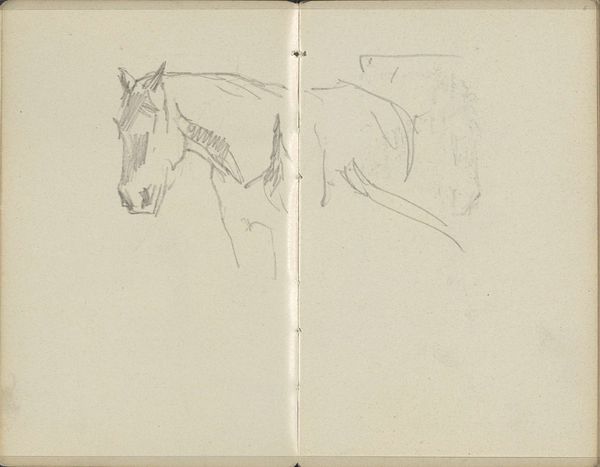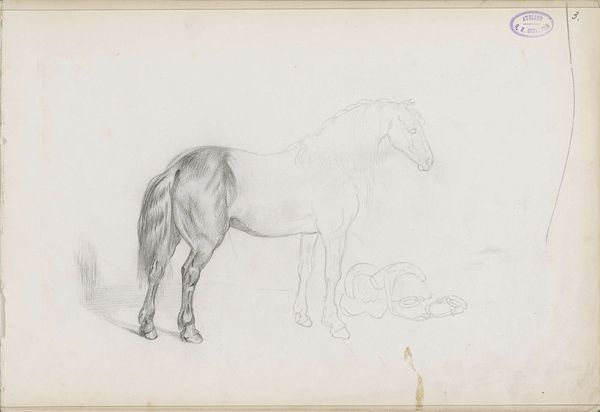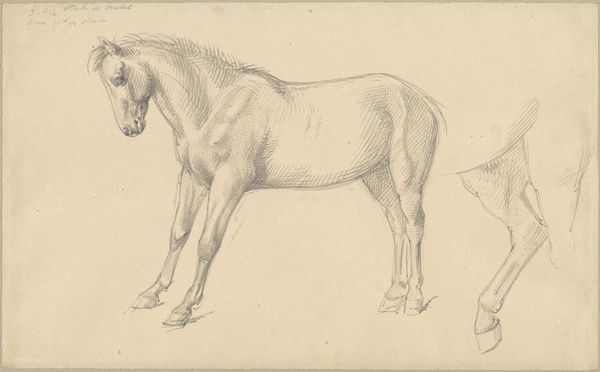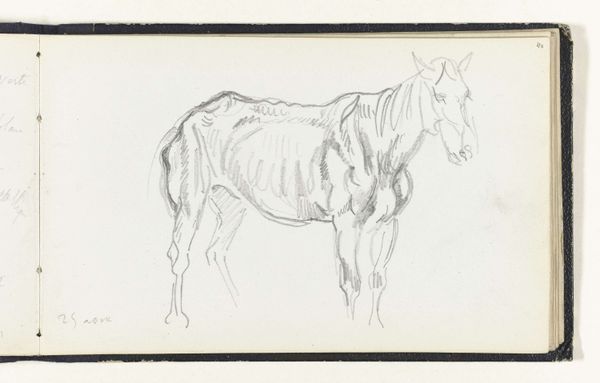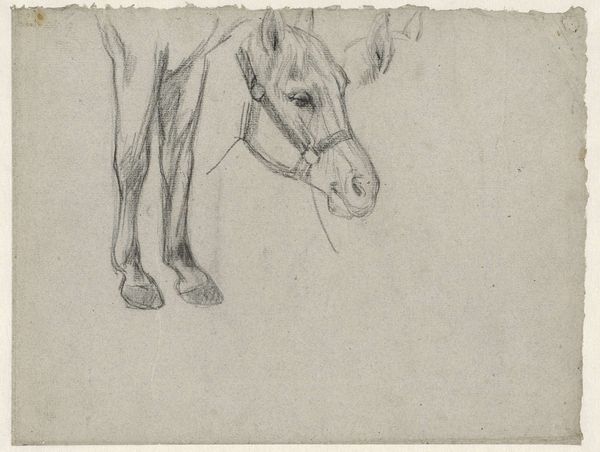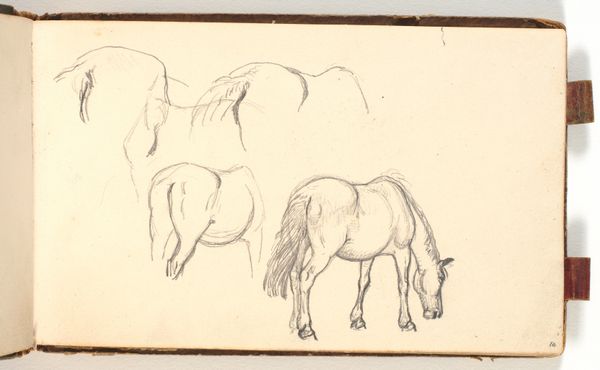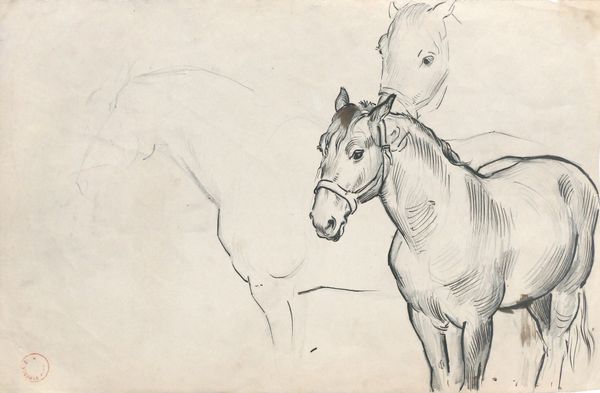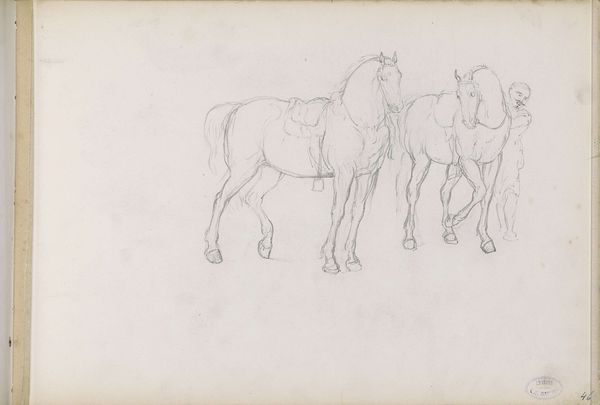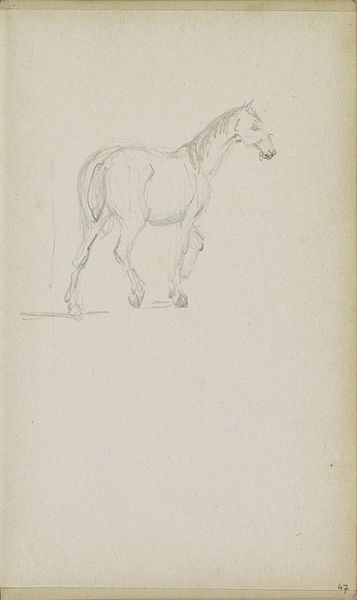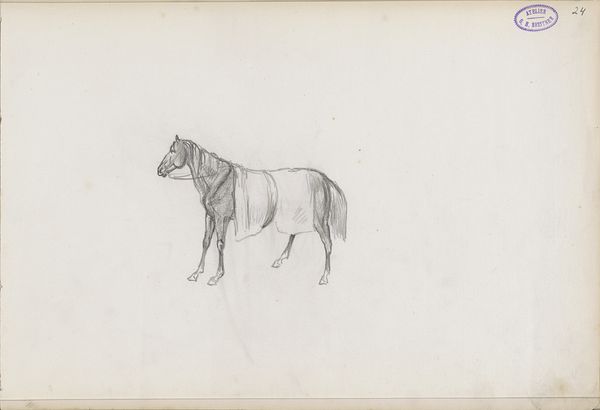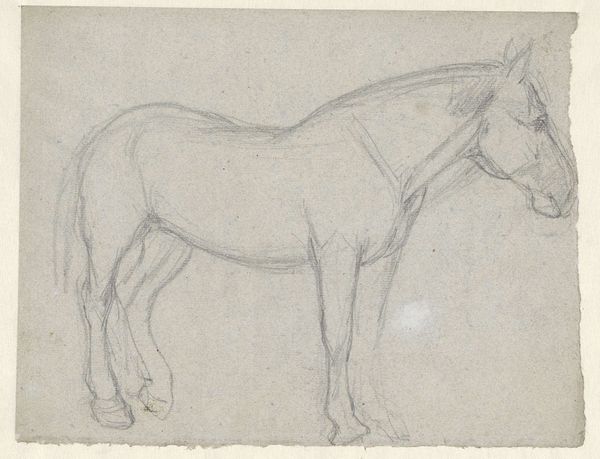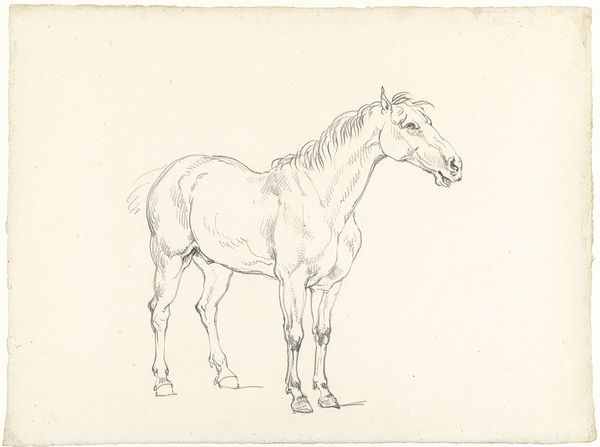
drawing, pencil, graphite
#
portrait
#
drawing
#
animal
#
landscape
#
form
#
pencil
#
horse
#
line
#
graphite
#
realism
Copyright: Rijks Museum: Open Domain
Curator: Welcome. We are looking at "Paarden," a pencil and graphite drawing by Jozef Israëls, dating from around 1855-1859, currently held at the Rijksmuseum. Editor: I am immediately struck by its unfinished quality. It's just raw sketches on paper. The materiality feels immediate. Curator: Precisely. It offers insight into Israëls' artistic process. At the time, the artistic academies were pushing for history paintings, works depicting the bible or scenes of mythology, and Israëls himself had his own internal debates on what was considered appropriate subject matter. Drawings like these provide access into the intellectual climate during that era. Editor: You see the intellectual debate; I see the directness of the artist's hand! The layering of graphite suggests that the artist cared a great deal about representing horses in all their glory. Think about how important these creatures were for transport, agriculture, and warfare throughout the history of that time! This artwork is also about our interaction with them. Curator: That’s a valid point. These weren't just animals. Horses were indeed intertwined with the economy, military structure and daily life of 19th-century Europe. And of course, sketching was also an important step in the education of an artist, who had to train their hands and their vision. It could be argued that this function makes the page an internal working document only ever intended to be seen by the artist. Editor: Exactly! And here it is for everyone to see, challenging established ideas about value! Israëls focuses on line and form, which highlights a certain kind of appreciation for both his materials, his technique, and the creatures themselves. Curator: Yes, and that raises interesting questions about who the work was really meant for, what was considered 'finished' at the time, and who determines those standards of completion in the first place. These studies demonstrate that the status attributed to 'high' art, the art deemed to have a 'public' message or be the finest creation for a collector’s private viewing room. It overlooks how drawings are an artistic medium in its own right and deserves just as much consideration as those produced with paint on canvas. Editor: Absolutely. Seeing the marks on paper, understanding the techniques – that brings me closer to the art. And in this instance to Jozef Israëls, to this particular subject of horses and an intimate viewing experience into an item we do not always get the chance to examine. Curator: An intriguing journey. Thank you for your insights. Editor: My pleasure. Thanks for lending me yours too.
Comments
No comments
Be the first to comment and join the conversation on the ultimate creative platform.
